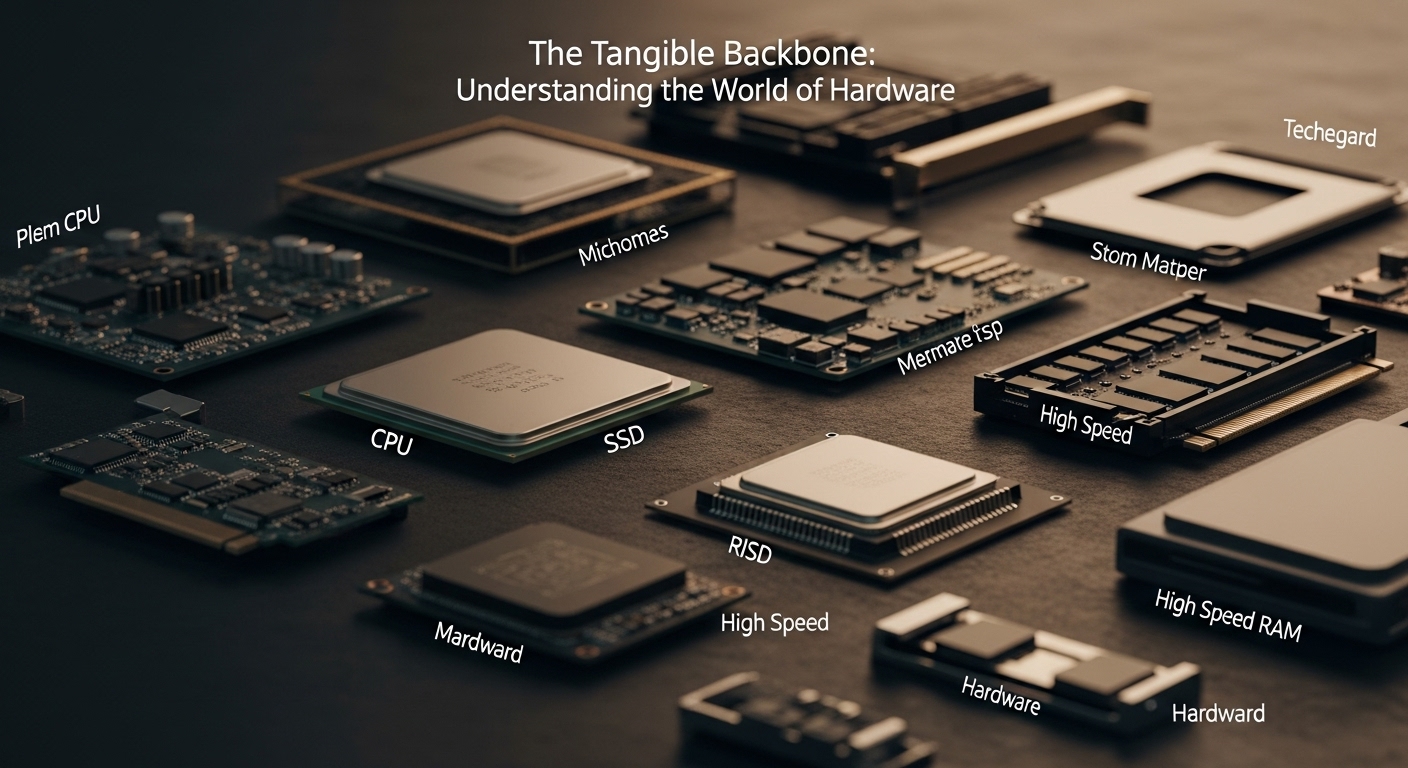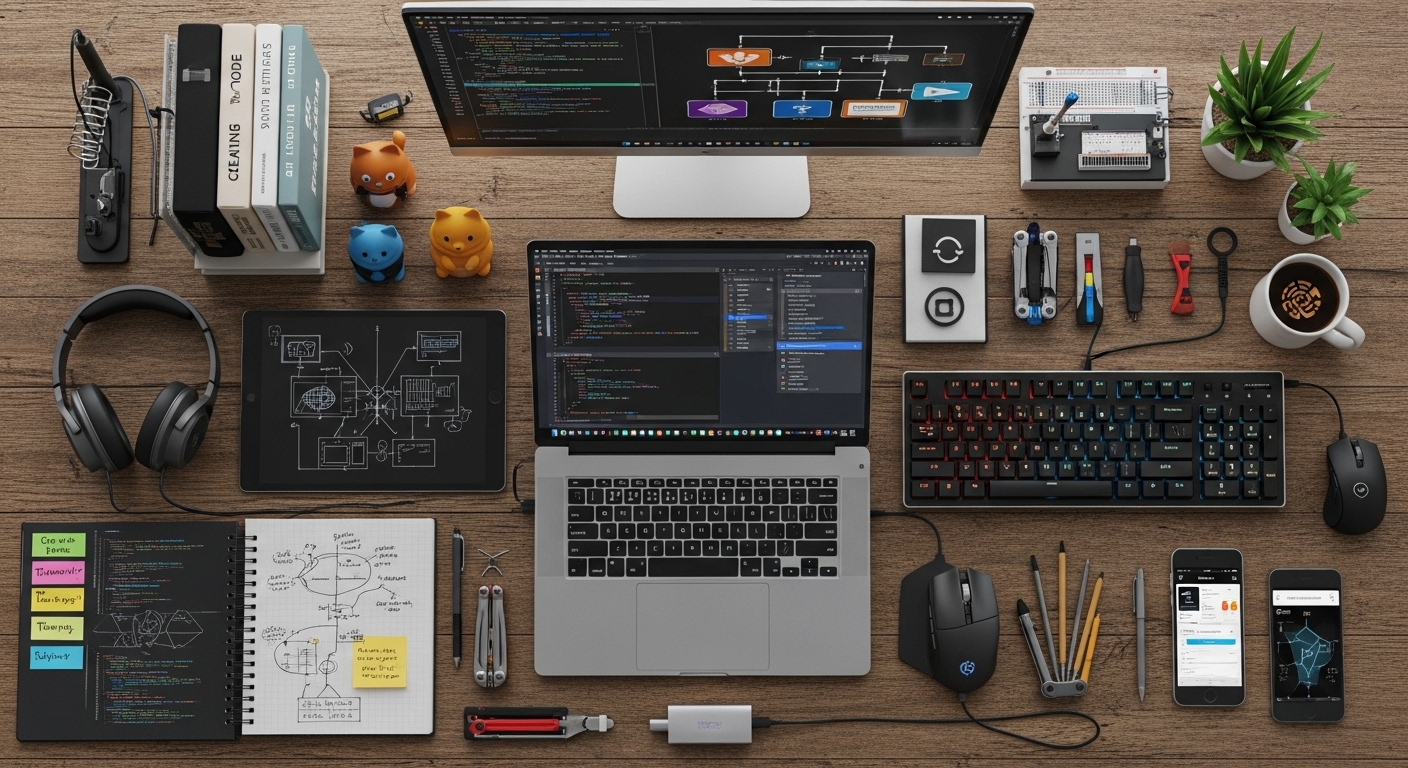In our increasingly digital world, it’s easy to get lost in the ethereal realm of software, data, and the cloud. Yet, none of these would exist or function without the unsung hero: hardware. Hardware refers to the physical components of a computer system that you can touch and see – the tangible foundation upon which all digital operations are built.
From the supercomputers processing complex scientific data to the tiny chips powering your smartwatch, hardware is the engine that drives our technological age.
The Anatomy of Hardware: Internal and External Components
Computer hardware can generally be categorized into internal and external components:
Internal Hardware: These are the components residing inside the computer case, crucial for processing, memory, and storage:
- Central Processing Unit (CPU): Often called the “brain” of the computer, the CPU executes instructions, performs calculations, and manages the flow of data. Its speed and core count are critical indicators of a computer’s overall performance.
- Random Access Memory (RAM): This is volatile memory that temporarily stores data and programs actively being used by the CPU. The more RAM a computer has, the more tasks it can handle simultaneously without slowing down.
- Motherboard: The central printed circuit board that connects all other internal components, providing electrical pathways and communication channels between the CPU, RAM, storage, and expansion cards.
- Storage Devices:
- Hard Disk Drives (HDDs): Traditional storage that uses spinning platters to store data magnetically. Known for large capacities at a lower cost.
- Solid State Drives (SSDs): Newer, faster storage that uses flash memory. SSDs offer significantly quicker boot times, application loading, and data transfer speeds compared to HDDs.
- Graphics Processing Unit (GPU): A specialized processor designed to render images, videos, and animations. Essential for gaming, video editing, and increasingly, for AI and machine learning tasks.
- Power Supply Unit (PSU): Converts alternating current (AC) from the wall outlet into direct current (DC) to power all the computer’s internal components.
- Cooling Systems: Fans, heatsinks, and sometimes liquid cooling systems are vital for dissipating the heat generated by components like the CPU and GPU, preventing damage and ensuring stable performance.
External Hardware (Peripherals): These are devices connected to the computer, allowing users to interact with it, input information, or receive output:
- Input Devices:
- Keyboard: For typing text and commands.
- Mouse/Touchpad: For controlling the cursor and interacting with on-screen elements.
- Microphone: For audio input.
- Scanner: For digitizing physical documents and images.
- Webcam: For video input.
- Output Devices:
- Monitor/Display: For visual output.
- Printer: For producing hard copies of digital documents.
- Speakers/Headphones: For audio output.
- Projector: For displaying images on a large screen.
- Networking Hardware: Modems, routers, and network interface cards (NICs) enable computers to connect to networks and the internet.
A Brief History of Hardware Innovation
The journey of hardware is a testament to human ingenuity. From the abacus as an early counting device, to the mechanical calculators of Blaise Pascal and Gottfried Wilhelm Leibniz, the seeds of computing were sown centuries ago.
The 19th century saw Charles Babbage’s Difference Engine and Analytical Engine, conceptualizing general-purpose programmable machines, though limitations in manufacturing technology prevented their full realization. Herman Hollerith’s punch-card system for the 1890 U.S. Census marked a significant step towards automated data processing.
The 20th century brought the electronic era. Early computers like ENIAC (Electronic Numerical Integrator and Computer) used bulky, heat-generating vacuum tubes. The invention of the transistor in 1947 revolutionized hardware, leading to smaller, more reliable, and energy-efficient computers. This paved the way for integrated circuits (ICs) and eventually, the microprocessor in the 1970s, which ushered in the era of personal computers.
Since then, hardware has experienced exponential growth, driven by Moore’s Law, which predicted that the number of transistors on a microchip would double approximately every two years.
Current Trends and Future Frontiers
Hardware continues to be a hotbed of innovation, pushing the boundaries of what’s possible:
- Specialized Processors for AI: Beyond traditional CPUs and GPUs, we’re seeing the rise of AI accelerators like Tensor Processing Units (TPUs) and Neural Processing Units (NPUs), specifically designed to efficiently handle the massive computations required for artificial intelligence and machine learning.
- Advanced Memory and Storage: Persistent memory technologies (e.g., Intel Optane) are blurring the lines between RAM and storage, offering faster data access. Next-generation SSDs using technologies like PCIe 5.0 are dramatically increasing data transfer speeds.
- Heterogeneous Computing Architectures: Future systems will increasingly integrate different types of processors (CPUs, GPUs, AI accelerators, FPGAs) into a single system or chiplet-based designs to optimize performance for diverse workloads.
- Neuromorphic Computing: Mimicking the human brain’s structure and function, neuromorphic chips aim for highly energy-efficient and parallel processing, ideal for AI tasks.
- Quantum Computing: While still in its early stages, quantum hardware promises to solve problems intractable for even the most powerful classical computers, with potential applications in cryptography, drug discovery, and materials science.
- Edge Computing Devices: As the Internet of Things (IoT) expands, there’s a growing need for powerful, yet small and energy-efficient hardware at the “edge” of networks to process data closer to its source, reducing latency and bandwidth usage.
- Sustainable Hardware: With increasing awareness of environmental impact, manufacturers are focusing on designing more energy-efficient components, exploring sustainable materials, and extending product lifecycles.
- Miniaturization and Integration: The relentless drive to make devices smaller, more powerful, and seamlessly integrated continues, leading to advancements in wearables, implantable devices, and highly integrated systems-on-a-chip (SoCs).
Hardware remains the fundamental bedrock of our digital existence. As we venture further into an era dominated by AI, hyper-connectivity, and immersive experiences, the continuous evolution of hardware will be paramount in transforming futuristic concepts into tangible realities. The silent, tireless work of these physical components will continue to define the limits and possibilities of our technological future.



